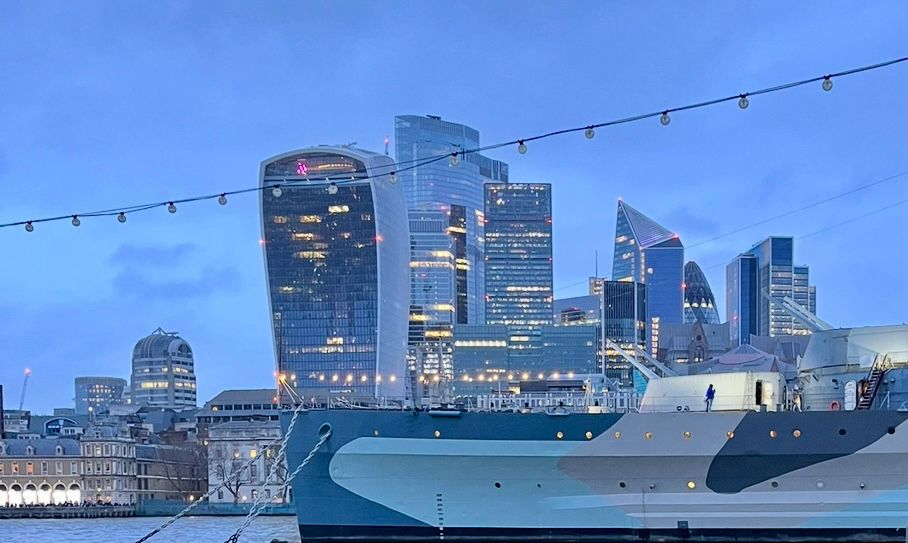Yet in the shadows of that apparent surrender, the architects of a Second Empire began their work. Their canvas was not the blood-red maps of Victoria’s day but the translucent flow of capital, law, and influence — a realm where flags mattered less than formulas, where sovereignty bent not to cannon fire but to clauses in a contract.
The Birth of the Invisible Empire
The transformation began quietly. Post-war Britain, battered and rationed, saw its currency falter under the weight of a changing world. The dollar reigned supreme. Sterling, once the sun around which global commerce revolved, dimmed. And then came the crisis of confidence, the run on sterling — a slow-motion hemorrhage threatening to dismantle not just Britain’s economy but its last vestige of status.
As Professor Ronen Palan of the University of London explains:
“Following the crisis there was a run on sterling, the UK pound. Some suspected the American government was encouraging this run on the UK pound. As financiers withdrew their money from Britain, the value of the pound decreased. To protect the value of the pound, Britain limited the banks’ overseas lending. They were unable to invest abroad, and obviously they were unhappy. We don’t know exactly the context, but it is very clear that the banks or their representatives made a representation to the Bank of England, which in itself was dominated by representatives from the banking industry. It seems that they reached an agreement, which was never written, that if banks intermediated between two non-residents, in a foreign currency — in that case the dollar — this particular intermediation, this particular deal would not be considered by the Bank of England as under its own jurisdiction.”
That unwritten agreement was not a footnote. It was the quiet birth of the Eurodollar market — a financial frontier where British ingenuity resurrected imperial reach without a single soldier. Offshore dollars — American currency held outside American soil — became the lubricant of a system that would soon dominate the global economy.
From Gunboats to Gateways
In the old empire, Britain controlled trade routes with frigates and ironclads. In the new empire, it controlled capital routes — the invisible highways of money connecting continents, corporations, and governments. The rules were rewritten with elegant precision: if two non-residents transacted in a foreign currency beyond the UK’s jurisdiction, the deal was invisible to British regulators. Freedom for banks. Freedom for capital. Freedom for an empire reborn as a network, not a nation.
According to some sources, Britain’s financial metamorphosis was nothing short of audacious:
•25% share of global financial services exports — a quarter of the world’s financial plumbing flowing through a city that occupies less than 2% of Britain’s landmass.
•$50 trillion estimated assets shielded offshore — wealth sheltered in legal architectures as intricate as any cathedral, spread across an empire of 14 overseas territories, 7 of them bona fide tax havens.
•The City of London — two square miles generating nearly 10% of the UK’s GDP.
These were not the relics of a fallen empire. They were the foundations of a new order — a networked imperium operating under the banner of progress, equality, and democratic finance.
The Progressive Illusion — Or the Progressive Reality?
Unlike the old empire, this Second Empire cloaked itself in the language of modernity. No conquest, no plunder, no racial hierarchies carved into stone. Instead, access, liquidity, and mobility — words of liberation, not domination. It offered former colonies — now sovereign states — a seat at the table, a channel to global markets. It offered capital the wings of freedom — from borders, from bureaucracy, from politics.
Was this not the essence of progress? A world where finance democratized opportunity, where investment could flow to Lagos as easily as to London? Where rules of old empires, with their hierarchy and blood, were replaced by the mathematics of markets and the promise of parity?
Yet beneath the progressive façade lay the profound cunning of continuity. Britain did not abandon power. It reinvented it — from territorial dominion to jurisdictional arbitrage, from the visible empire of red maps to the invisible empire of blue screens.
And so the story begins not with a funeral but with a resurrection — a phoenix rising not from ashes but from algorithms, carrying with it a paradox: an empire that claims equality while commanding advantage; that speaks of freedom while mastering flows; that vanished from the seas only to conquer the skies of capital.

